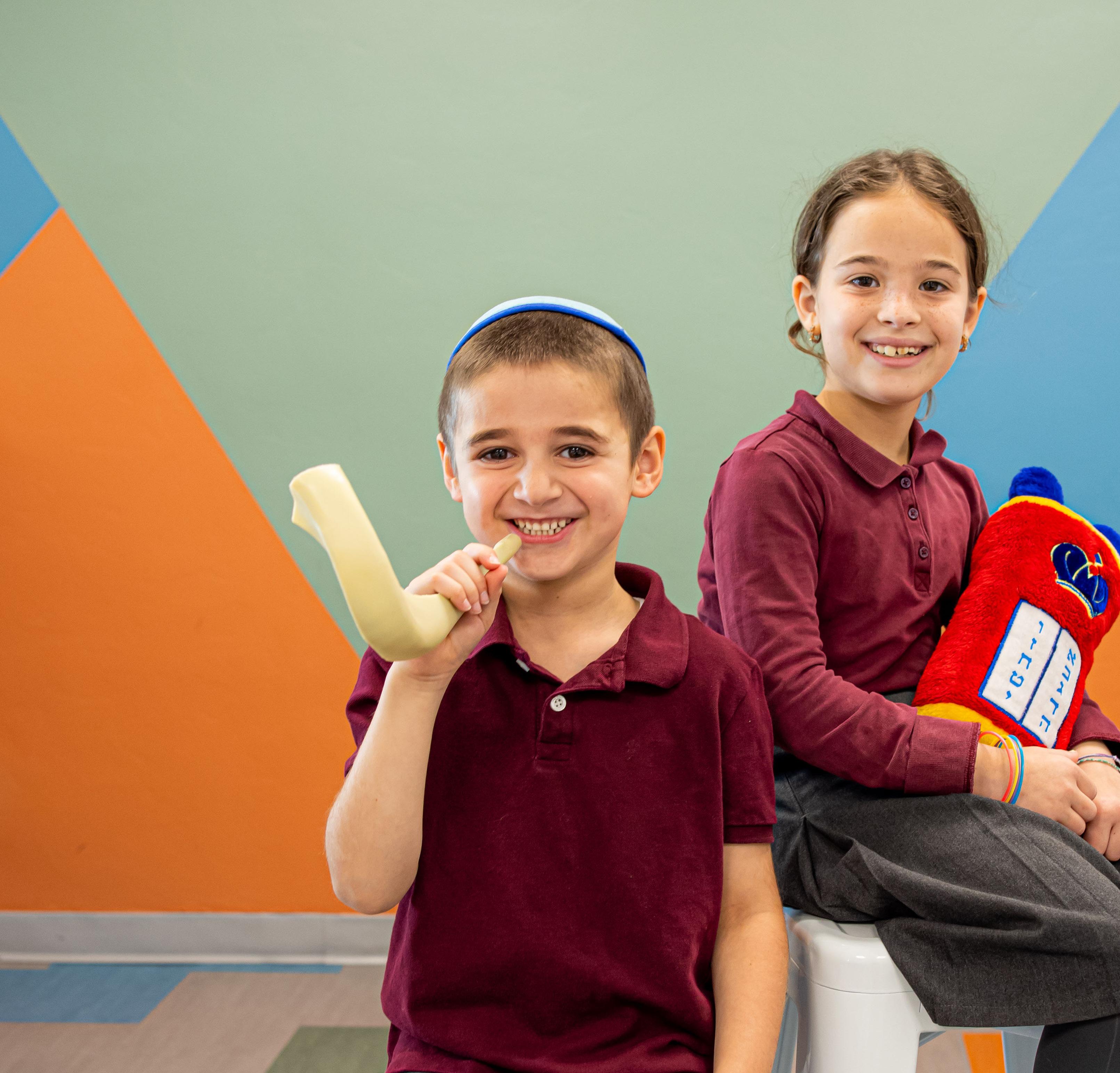
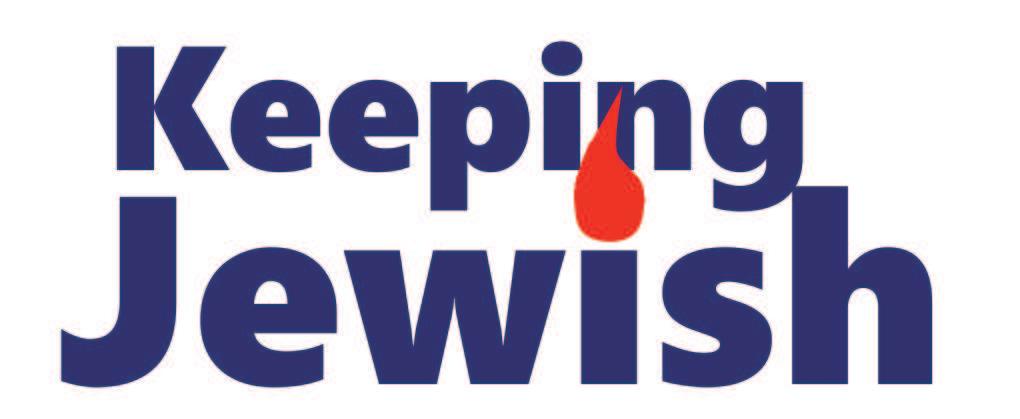

Keeping Jewish | September 2023 | BS”D CASUALTIES, MIRACLES AND HEALING: 50TH ANNIVERSARY OF THE 1973 YOM KIPPUR WAR Tradition, Inspiration and Celebration · September 2023 - Tishrei 5784 · Published by Chabad Tucson New year in limbo The uncertainty of Rosh Hashanah 2001 Welcome to town Dr. Diane Ashton remembers walking to Shul with her Bubbe Fun in the Sukkah A delightful salad and a napkin holder Happiness is a thought Judaism’s solution to the “happiness problem” Bright start Welcoming the new Jewish year of 5784
The Jewish outreach and education network of Southern Arizona
2443 E 4th Street, Tucson, AZ 85719
EXECUTIVE DIRECTOR
Rabbi Yossie Shemtov
REBBETZIN
Chanie Shemtov
OUTREACH DIRECTOR
Rabbi Yehuda Ceitlin
PROGRAM DIRECTOR
Feigie Ceitlin
Affiliates:


Congregation Young Israel, Chabad at the University of Arizona, Chabad on River, Chabad of Oro Valley, Chabad of Sierra Vista, Chabad of Vail and Lamplighter Chabad Day School of Tucson

Which for war, and which for peace
Reflections on Rosh Hashanah 2001
By Rabbi Yehuda Ceitlin
My luggage was packed, and the taxi was booked when the news unfolded that there had been a deliberate terror attack on the World Trade Center in New York. All flights were grounded. Suddenly, days before Rosh Hashanah, our New Year plans were left in limbo.
The world was shattered that day. The most powerful country in the world — one that had not seen an attack of this magnitude since Pearl Harbor — was consumed with uncertainty for the future and fear for the present. It brought even greater meaning to the Rosh Hashanah liturgy, “Concerning countries, judgment is pronounced on this day — which for war and which for peace...”
Ukraine had only regained its independence a decade or so earlier and faced continued, sometimes existential challenges, and yet the Americans that year seemed like the less fortunate ones. Ukraine became independent without bloodshed with the signing of the Belovezha Accords. The United States was about to embark on the longest-lasting war in its history.
Which for war, and which for peace.
EDITOR
Rabbi Yehuda Ceitlin
COPY EDITOR
Suzanne Cummins
CONTRIBUTING WRITERS
Zalman Abraham, Seymour Brody, Feigie Ceitlin, Mendel Kalmenson, Menachem Posner, Mordechai Schmutter, Benjamin Weiss, Mushky Yiftach, Dovid Zaklikowski
PHOTOS
Jacqueline Soffer Studio
SPECIAL THANKS Chabad.org
EDITORIAL INQUIRIES OR ADVERTISING
Phone: 520-881-7956
Email: info@ChabadTucson.com
Keeping Jewish is published in print periodically by Chabad Tucson and is distributed free in Tucson and around Southern Arizona
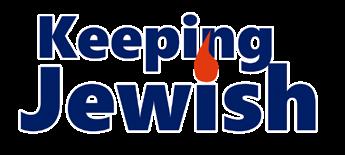
Chabad Tucson does not endorse the people, establishments, products or services reported about or advertised in Keeping Jewish unless specifically noted. The acceptance of advertising in Keeping Jewish does not constitute a recommendation, approval, or other representation of the quality of products or services, or the credibility of any claims made by advertisers, including, but not limited to, the kashrus of advertised food products. The use of any products or services advertised in Keeping Jewish is solely at the user’s risk and Chabad Tucson accepts no responsibility or liability in connection therewith.
Note: “G-d” and “L-rd” are written with a hyphen instead of an “o .”This is one way we accord reverence to the sacred divine name. This also reminds us that, even as we seek G-d, He transcends any human effort to describe His reality.
Preparations for Rosh Hashanah (this year Friday evening, September 15 through Sunday night, September 17) often take me back to the pivotal year of 2001. That year, my experience of the Jewish High Holidays was a powerful and lasting memory.
I was a Yeshiva student in Israel at the time and was tasked with coordinating a mission of 25 rabbinical students to lead services in Jewish communities in western Ukraine. Long years of Soviet suppression of religion had had an impact that was difficult to shake off — locals relied on us, as they knew little about Jewish customs or how to read Hebrew.
Rosh Hashanah began that year on September 17, so we scheduled a flight from Tel Aviv to Boryspil International Airport in Kyiv for the evening of Tuesday, September 11.
When flights resumed a few days later, we were able to make it to Zhytomyr shortly before the holiday began. Residents, scarred by years of Communist terror, greeted us with enthusiasm. Their yellowpainted brick synagogue was the last one standing out of 40 synagogues that once operated in the city. They had worked hard in the years since the fall of the Iron Curtain to rebuild their community, and they took pride in what they achieved. They knew precious little about their heritage and were eager to learn more.
We helped them conduct services, navigate the prayer books, read from the Torah scroll, and sound the Shofar, which is the central activity of Rosh Hashanah. We then sat together for the holiday meals, singing Chassidic melodies in Ukrainian and Russian, languages used interchangeably in those early post-Soviet years.
Many of our prayers that year were for the people of the United States. We thought about those who perished. We prayed for the firefighters and first responders who heroically risked — and gave up — their lives so that others could live. We prayed that the optimism for the future and peace in the present prevalent in Ukraine would soon exist in the U.S. as well.
Today, more than two decades later, the world has once again reversed. Americans are living in safety and peace, and now the people of Ukraine are in need of our prayers and support amid the largest war on the European continent since World War II.
Which for war, and which for peace.
This Rosh Hashanah, I’ll be praying that this year will be the one in which every nation in the world is at peace, and that all of humanity enters an era of stability and harmony.
- Rabbi Yehuda Ceitlin is the Outreach Director of Chabad Tucson

| September 2023 | Keeping Jewish
2
OPINION
Open doors these these High Holidays
Free services offered by 6 Chabad centers in Southern Arizona
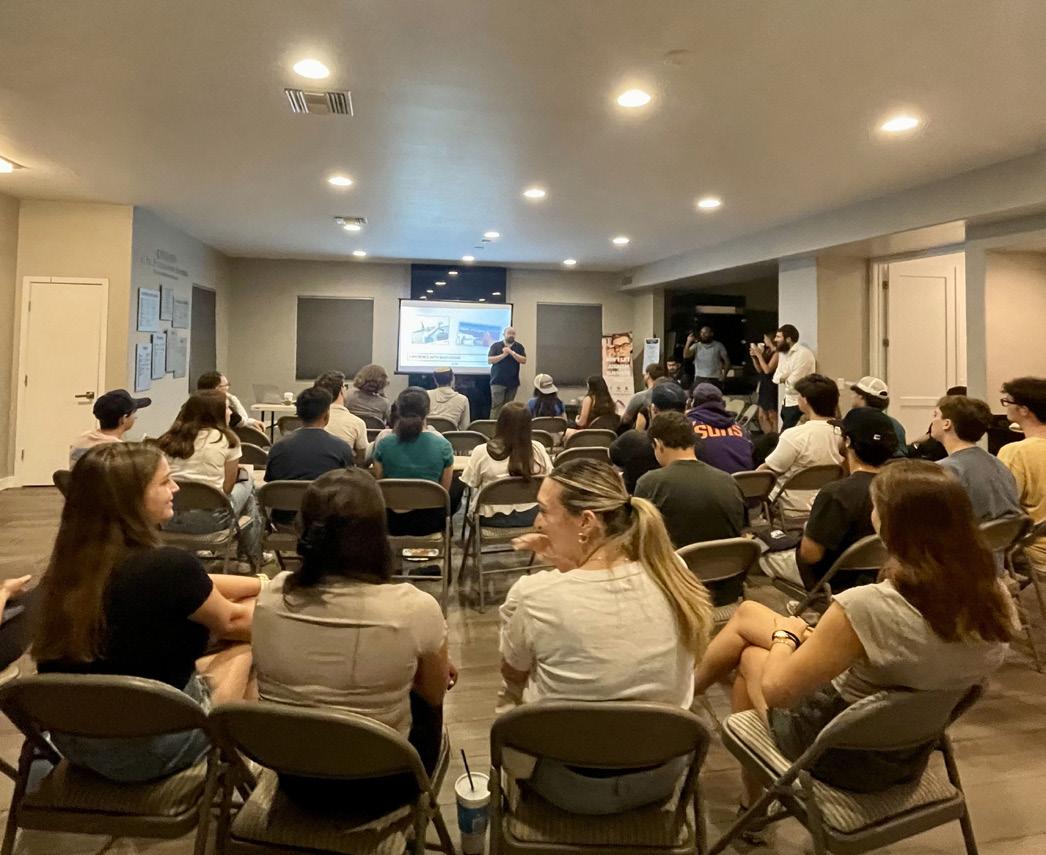
With Rosh Hashanah, the Jewish New Year, beginning at sunset on Friday, September 15 and concluding after nightfall on Sunday, September 17, Chabad centers in Southern Arizona offer High Holiday synagogue services to ensure everyone has a place to pray.
Chabad-Lubavitch — today, the world’s largest and fastest-growing Jewish organization — has for decades championed the belief that Judaism belongs to every Jew, and it should be accessible to all. By embodying this ethos, Chabad has made High Holiday services available free of charge, a model other synagogues and movements have begun to emulate.
Chabad’s services make for a meaningful experience, suitable for the beginner and the advanced. Utilizing traditional tunes and songs, commentary and bilingual prayer books, Chabad engages individuals
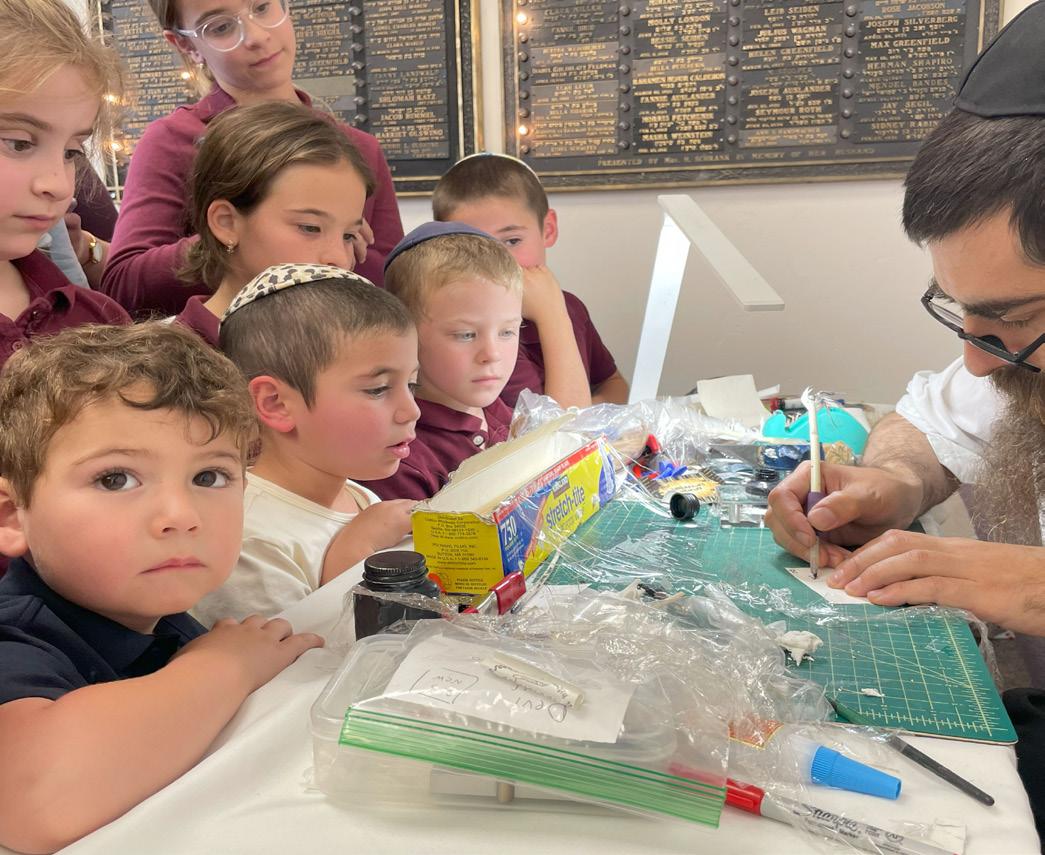
Nourishing connections
Handmaker Jewish Services For The Aging will host a monthly Shabbat Lunch & Learn program for older adults in the community. This year-long outreach program, supported by a grant from the Jewish Community Foundation, begins this fall, one Friday each month.

of all levels as active participants in the service.
For any who might be interested, Chabad will once again be offering a brief “Shofar in the Park” service on Sunday, September 17, 5:00 PM at Himmel Park, corner of N Tucson Blvd and E 1st St, in front of the Tennis Center.
For details about Chabad’s various services, visit or contact:
The Shul of Tucson (Young Israel)
Rabbi Yossie & Chanie Shemtov
Rabbi Yehuda & Feigie Ceitlin
2443 E 4th Street, Tucson, AZ 85719 520-881-7956 • ChabadTucson.com
Chabad @ University of Arizona
Rabbi Shmulie & Sarah Shanowitz
1436 E Drachman St, Tucson, AZ 85719 520-820-8939 • JewishUArizona.com
Chabad on River
Rabbi Rami & Chani Bigelman
3916 E Fort Lowell Rd, Tucson, AZ 85712 520-661-9350 • ChabadOnRiver.com
Chabad Oro Valley
Rabbi Ephraim & Mushkie Zimmerman
Rabbi Baruch & Adeli Zimmerman
1171 E Rancho Vistoso Blvd #131 Oro Valley, AZ 85755
520-477-8672 • JewishOroValley.com
Chabad of Vail
Rabbi Sruly & Chavie Shemtov
9607 Crowley Brothers Dr, Tucson, AZ 85747
347-372-3092 • JewishVailAZ.com
Chabad of Cochise County
Rabbi Benzion & Chaya Shemtov
597 E Fry Blvd, Sierra Vista, AZ 85635 520-820-6256 • JewishSierraVista.com
This program is open to residents and nonresidents of Handmaker. Transportation can be arranged for those who require assistance. It is part of an effort by the Jewish Community to connect or re-connect with isolated older adults, in part as a residual consequence of the pandemic.
Participants will enjoy a delicious kosher lunch, followed by a talk on healthy aging-related topics with experts in our community. Some topics will include Financial Wellness, Mindfulness and Aging, Managing Grief and Loss, Forgetfulness with Aging, with various experts on these subjects and more.
Participants will have the option of preordering and taking home with them Shabbat dinners. There is no cost to participate, but reservations are required. To sign up and for more information, contact Nanci Levy at 520-322-3632 or nlevy@handmaker.org
Keeping Jewish | September 2023 | NEWS
3
Students of Lamplighter Chabad Day School watch Rabbi Nissan Dovid Bressman, a scribe from Los Angeles, correct local Mezuzahs in Tucson.
Chabad at the University of Arizona hosted “Courage and Sacrifice - Heroes of the IDF,” an evening with 2 Israeli warriors about their service.
Participants enjoy a meal at Kitchen 18 in Scottsdale as part of Chabad of Oro Valley’s community bus trip to Phoenix
Rosh Hashanah
SEPTEMBER 15-17, 2023
Rosh Hashanah 2023, which ushers in the Jewish year 5784, starts just before sundown on Friday, September 15, 2023, and ends after nightfall on Sunday, September 17, 2023.
Observed on the day G‑d created Adam and Eve, it’s celebrated as the head of the Jewish year. Unlike the secular New Year’s Day, it is a holy time, dedicated to prayer, feasting, and hearing the sounds of the shofar (ram’s horn), which is the central observance.
Candle lighting
We light candles of Rosh Hashanah on Friday, September 15, 2023, at 6:12 PM, and recite the following blessing:
Bah‑rookh ah‑tah ah‑doh‑noi eh‑loh‑hay‑ noo meh‑lekh hah‑oh‑lahm, ah‑shehr ki‑ deh‑shah‑noo beh‑mitz‑voh‑tahv veh‑tzee‑ vah‑noo leh‑hahd‑lik nayr shehl shah‑baht veh‑shehl yohm hah‑zee‑kah‑rohn. Blessed are you, L‑rd our G‑d, King of the universe, who has sanctified us with His commandments and has commanded us to kindle the light of the Sabbath and of the Day of Remembrance.
We then recite the Shehecheyanu blessing:
Bah‑rookh ah‑tah ah‑doh‑noi eh‑loh‑hay‑ noo meh‑lekh hah‑oh‑lahm sheh‑heh‑kheh‑ yah‑noo veh‑kee‑mah‑noo ve‑hig‑ee‑yah‑noo liz‑mahn hah‑zeh.
Blessed are You, Lord our G‑d, King of the universe, who has granted us life, sustained us, and enabled us to reach this occasion.
On the second night of Rosh Hashanah, light candles from a pre-existing flame on Shabbat, September 16, 2023, after 7:05 PM. We recite the above blessing but omit the mention of Shabbat.
Prayers and wishes
The Rosh Hashanah synagogue services are all in the Machzor, the High Holiday
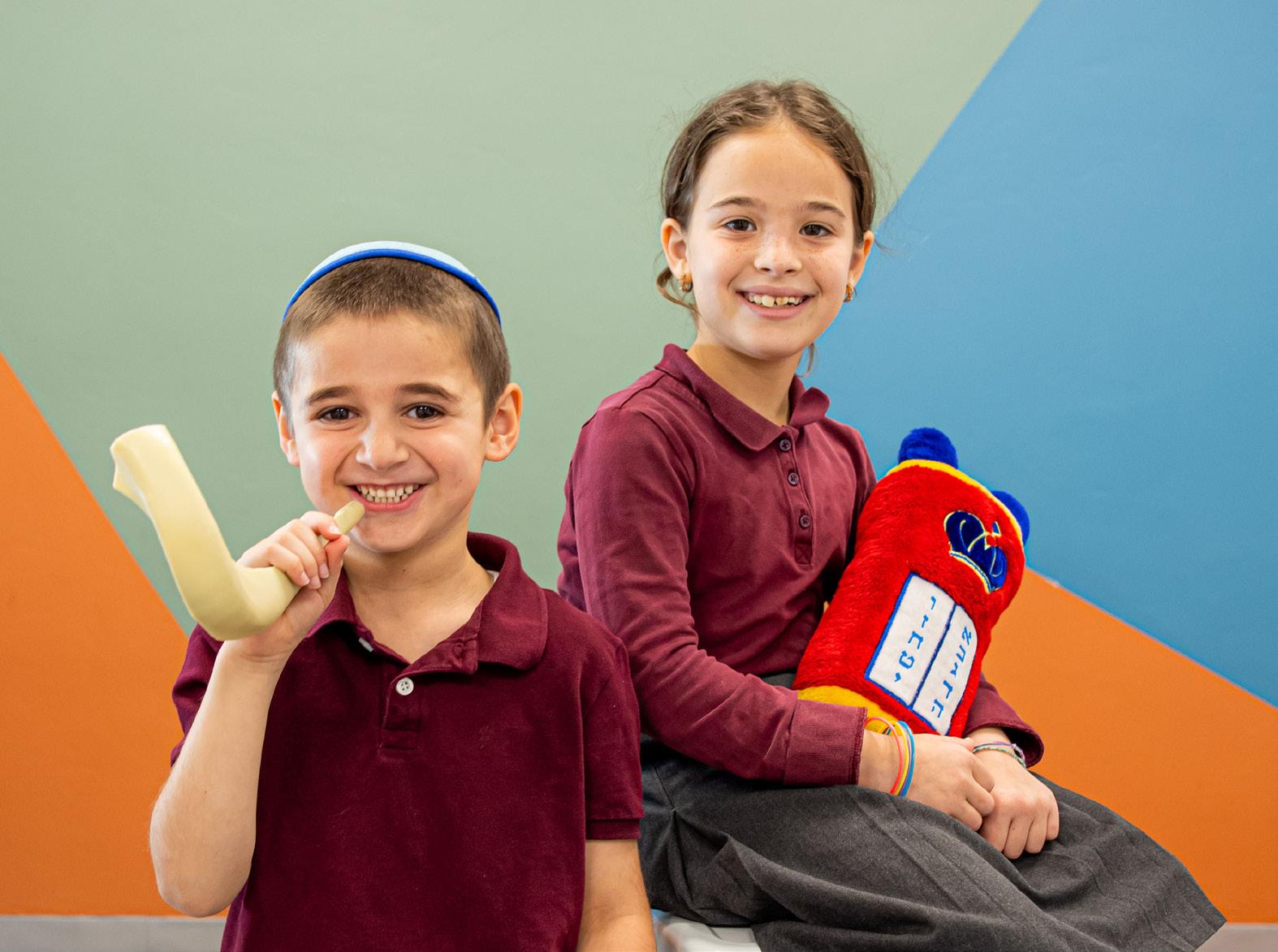
prayerbook. The holiday evening synagogue services are fairly brief, shorter than an ordinary Shabbat.
Services on both days include the reading of the Torah and Haftorah (the first day about the birth of Isaac and Samuel, and the second day the Binding of Isaac and G‑d’s love for us).
This year, the shofar is blown on the second day of Rosh Hashanah—Sunday (September 17) as we may not blow the shofar on Shabbat. (See page 3 for a list of Chabad services and the Shofar in the Park service).
After services, on the first night, the greeting for men is “Leshanah tovah tikatev v’teichatem,” and for women, “Leshanah tovah tikatevee v’teichatemee.” Both mean, “May you be written and sealed for a good year.”
The catch‑all greeting, which is good for the entire season, is “shanah tovah,” which means “good year.” To say it in full, “shanah tovah u’metukah” which means “a good and
sweet year.”
Special foods and meals
Since Rosh Hashanah coincides with Shabbat this year, all the food must be cooked, baked, or reheated before Shabbat and the holiday begins.
Rosh Hashanah feasts traditionally include round challah bread (studded with raisins) and sweet foods that symbolize our wishes for a sweet year. The festive meal begins with the Kiddush, and enjoying challah dipped in honey.
It is a common custom to eat apples and honey on the first night of Rosh Hashanah. Before eating the apple, we say:
Bah‑rookh ah‑tah ah‑doh‑noi eh‑loh‑hay‑ noo meh‑lekh hah‑oh‑lahm bo‑ray pe‑ree hah‑etz (“Blessed are You, L‑rd our G‑d, King of the universe, who creates the fruit of the tree.”)
Yeh‑hee rah‑tzohn mee‑leh‑fah‑neh‑khah sheh‑tih‑kha‑desh ah‑lay‑noo shah‑nah to‑
vah oo‑meh‑too‑kah (“May it be Your will to renew for us a good and sweet year.”)
Tradition says that on the first night, we eat a fish head (not always loved, but it is tradition), along with the more delicious pomegranates, carrots, and other symbolic foods.
Second day
The second night of Rosh Hashanah (Shabbat, September 16) includes the following elements:
1. Prayer services at synagogue, just like the first night
2. Holiday candles (from a pre‑existing flame, after night has fallen), with the added blessing of Shehecheyanu
3. Kiddush over wine (with Shehecheyanu, if you did not say it when lighting candles)
4. A new fruit, enjoyed immediately after Kiddush
5. Round challah, often studded with raisins
6. A festive meal, all of which must be prepared after night has fallen.
Conclusion of the holiday
Tashlich, in which we stand near a body of water and ask G‑d to cast our sins away, is done in the late Sunday afternoon on the second day of Rosh Hashanah. It can be done as late as Chol Hamoed Sukkot before Hoshanah Rabah. Some specifically do Tashlich on the 8th of Tishrei, as the mystics call it “the day of the Thirteen Attributes.” Others perform it. The text to be said can be found in the Machzor or at www.Chabad.org/427290
Rosh Hashanah ends in Tucson on Sunday, September 17 at 7:04 PM. It is concluded with Havdalah, the ceremonial sendoff for a holiday when we say the basic text while holding a cup of wine or grape juice, which we drink afterward.
And with that, we begin the year with a l’chaim!
| September 2023 | Keeping Jewish 4
HOLIDAYS 101
Photo: Jacqueline Soffer Studio
On Yom Kippur, the holiest day on the Jewish calendar, we abstain from eating and drinking, bathing or anointing our bodies, wearing leather shoes, or engaging in marital relations. Refraining from these everyday comforts emphasizes that we can be more than creatures of impulse and that we must endeavor to nourish our souls as we do our bodies.
The history of this solemn day takes us back to the generation that received the Torah at Mount Sinai. Not long after this climactic event, some Jews engaged in an idolatrous practice. Moses pleaded with G-d to forgive the people he had led out of Egypt. On the tenth day of Tishrei, the day that would become Yom Kippur, G-d forgave the Jewish people. Since then, Yom Kippur has served as the annual Day of Atonement.
Sunday, September 24, the day preceding Yom Kippur, is treated as a holiday. Several observances on this day help prepare us:
We eat a festive meal as it lends us the strength to endure the subsequent fast and its many hours of immersive prayer. Our sages say that by celebrating the ninth of Tishrei, we demonstrate our eagerness for the renewal that Yom Kippur provides.
It is important to donate extra charity on this day. Earnings are the product
Yom Kippur
SEPTEMBER 24-25, 2023
of planning, creativity, effort, and investment—and with a single act of charity, all of these areas of personal investment are spiritually elevated and synced to the Divine purpose of bringing Heaven down to earth.
Yom Kippur allows us to atone for transgressions between an individual and G-d. Unless the offender has placated the victim, it does not atone for transgressions between one person and another. For that reason, Jewish law urges us to request forgiveness from whomever we may have aggrieved in the run-up to Yom Kippur. Only through the human interaction of the offender appeasing the victim and the victim granting forgiveness can the victim achieve full internal healing while the wrongdoer achieves profound internal change.
On this day, it is customary to request— from a parent, rabbi, or friend—a piece of honey cake (known in Yiddish as lekach) to symbolize our wish for a sweet year. We verbally request the slice of cake so that if it has been decreed that we will resort to requesting a handout during the year, we should preemptively fulfill the unsavory decree by verbally requesting a delectable slice—and not have to plead for further assistance during the entire coming year.
Before the fast begins, we remove any leather footgear that may not be worn on Yom Kippur. It is customary to wear a white garment on Yom Kippur to reveal our potential for achieving purity; it also reminds us of a shroud—inspiring the humility and self-accounting that arrives from reflecting on our mortality. It is also customary to avoid wearing anything made of gold to avoid invoking the sin of the Golden Calf.
Parents bless their children individually— young children and adult children alike— before the onset of Yom Kippur. Some recite the Priestly Blessing (Birchat Kohanim) while their hands are placed over the head of the child. The following is also added:
For a son: “May G-d make you like Ephraim and Menashe!”

For a daughter: “May G-d make you like Sarah, Rebecca, Rachel, and Leah!”
Beginning of the fast
We kindle holiday candles in the moments prior to the commencement of Yom Kippur, just as we do for any Shabbat and festival. In addition, many kindle a special candle in honor of the Yizkor prayers that they will recite the next day.
Yom Kippur begins at sunset on Sunday, September 24. Candles are lit at 6:00 PM and the fast begins at 6:14 PM.
The most famous segment of High Holiday liturgy is undoubtedly Kol Nidrei, a passage composed in ancient Aramaic that inaugurates the Yom Kippur services, chanted solemnly in a moving melody with keen emotional appeal.
The central theme of the day is teshuvah, commonly translated as “repentance,” but more accurately means “return.” Judaism teaches that any individual can perform teshuvah for any act at any time. However, Yom Kippur is particularly conducive for teshuvah because the sacredness of the day itself achieves atonement for those who tap into its potential by engaging in teshuvah.
The finale
In the closing hour of Yom Kippur, we pray the ne’ilah (“closing”) service. We seek to complete our Yom Kippur journey by expressing in prayer the profound oneness with G-d that is available to us overtly at this special time.
Yom Kippur ends on Monday, September 25 at 6:53 PM.

Keeping Jewish | September 2023 | 5
HOLIDAYS 101
Sukkot is a weeklong Jewish holiday that comes five days after Yom Kippur. It celebrates the harvest gathering and commemorates the miraculous protection G‑d provided for the children of Israel when they left Egypt. We celebrate Sukkot by dwelling in a foliage‑covered booth (known as a sukkah) and by taking the “Four Kinds” (arba minim), four species of vegetation.
The first two days (sundown on September 29 until nightfall on October 1) of the holiday are yom tov, when work is forbidden, and candles are lit on Friday at 5:53 PM in Tucson. The festive meals begin with Kiddush and include challah dipped in honey. On Saturday night, light from a pre‑existing plane after 6:46 PM. It concludes on Sunday, October 1 at 6:45 PM.
The intermediate days (nightfall on October 2 until sundown on October 6) are quasi‑holidays, known as Chol Hamoed. We eat in the sukkah and take the Four Kinds every day of Sukkot (except for Shabbat when we do not take the Four Kinds).
The final two days (sundown on October 6 until nightfall on October 8) are a separate holiday: Shemini Atzeret and Simchat Torah (see page 7).
SUKKOT
SEPTEMBER 29 - OCTOBER 6, 2023
The sukkah and meals
We eat all our meals in the sukkah for seven days and nights and otherwise regard it as our home. Located under the open sky, the sukkah is made up of at least three walls and a roof of unprocessed natural vegetation—typically bamboo, pine boughs or palm branches.

The goal is to spend as much time as possible in the sukkah, at the very minimum eating all meals in the sukkah— particularly the festive meals on the first two nights of the holiday. Some people even sleep in the sukkah.
The Rebbe, Rabbi Menachem Mendel Schneerson, explains (Torat Menachem 4, p. 32):
“The mitzvah of sukkah is unique in the sense that it encompasses our entire lives. According to Jewish law, throughout the festival, we are supposed to eat in the sukkah, sleep in the sukkah, and spend the maximum possible time there. In short, we bring our entire lives into the mitzvah of sukkah.
“This imparts a critical message about
our faith: Judaism is not just a minor facet of our lives. Judaism is designed to sanctify and guide the entirety of our lives, including superficially meaningless and mundane activities. Even such endeavors can be infused with sanctity.”
Before eating in the sukkah (when your meal or snack includes a grain‑based food), the following blessing is recited:
Baruch atah Ado‑nai, Elo‑heinu melech ha’olam, asher kidshanu bemitzvotav, vetzivanu leishev basukkah.
Blessed are You, L‑rd our G‑d, King of the Universe, Who has sanctified us with His commandments, and commanded us to dwell in the sukkah.
The lulav and esrog
Another Sukkot observance is the taking of the Four Kinds (arba minim): an etrog (citron), a lulav (palm frond), three hadassim (myrtle twigs) and two aravot (willow twigs).
On each day of the festival (except Shabbat), we take the Four Kinds, recite a blessing over them, bring them together and wave them in all six directions: right, left, forward, up, down and backward. The
sages of the Midrash tell us that the Four Kinds represent the various personalities that comprise the community of Israel, whose intrinsic unity we emphasize on Sukkot.
How to perform it:
Hold the lulav in your right hand (unless you’re a lefty), with its spine facing you.
Face east and say:
Ba‑ruch A‑tah Ado‑nai E‑lo‑he‑nu Me‑lech ha‑olam a‑sher ki‑de‑sha‑nu be‑mitz‑vo‑tav ve‑tzi‑va‑nu al netilat lulav.
Blessed are You, L‑rd our G‑d, King of the Universe, who has sanctified us with His commandments and commanded us regarding taking the lulav.
Pick up the etrog in your left hand.
[On the first day of Sukkot (or the first time on Sukkot you get to do this), at this point say:
Ba‑ruch A‑tah Ado‑nai E‑lo‑hei‑nu me‑lech ha‑olam she‑heche‑ya‑nu ve‑ki‑yi‑ma‑nu ve‑higi‑a‑nu liz‑man ha‑zeh.
Blessed are You, L‑rd our G‑d, King of the Universe, who has granted us life, sustained us and enabled us to reach this occasion.]
Bring the lulav and etrog together—you’ve done the mitzvah!
Jewish unity is one of the central themes of Sukkot. The four kinds you are holding symbolize four types of Jews, with differing levels of Torah knowledge and observance. Bringing them together represents our unity as a nation—despite our external differences. If you don’t have your own set, contact the nearest Chabad.
This holiday is so joyous that in Talmudic times, when someone said the word chag (“holiday”) without specifying which one, you could know that they were referring to Sukkot.
Even today, when there is no Temple, it is customary to hold nightly celebrations that include singing and dancing (and even live music during the intermediate days of the holiday).
| September 2023 | Keeping Jewish
HOLIDAYS 101 6
SHEMINI ATZERET & SIMCHAT TORAH
The festival of Sukkot leads directly into another two-day festival: Shemini Atzeret, which begins the evening of Friday, October 6, and Simchat Torah, which begins the next evening, Saturday, October 7.
On the final day of the festival, we conclude our annual public Torah reading cycle. It is customary to sing several liturgical poems and praises about the Torah and to promote joyfulness. This day has become known as Simchat Torah.
Candle lighting
After dark, women and girls (or if there is no adult woman in the house, the head of the household) light candles on Friday at 5:44 PM. After lighting, recite the following two blessings:
Ba-ruch a-tah Ado-nai E-lo-hei-nu me-lech ha-olam asher ki-deshanu be-mitzvo-tav vi-tzi-vanu le-hadlik ner shel yom tov.

commandments and has commanded us to light the candle of the holiday.
Ba-ruch a-tah Ado-nai E-lo-hei-nu me-lech ha-olam she-heche-ya-nu ve-ki-ye-ma-nu ve-higi-a-nu liz-man ha-zeh. Blessed are You, L-rd our G-d, King of the universe, who has granted us life, sustained us, and enabled us to reach this occasion.
Since Simchat Torah falls on a Saturday night, we light candles on October 7 after 6:37 PM. Before lighting, or before doing any work that is forbidden on Shabbat, one should say, “Baruch hamavdil bein kodesh l’kodesh,” (Blessed is He who separates between [the] holiness [of Shabbat] and [the] holiness [of the holiday]).
The special prayers
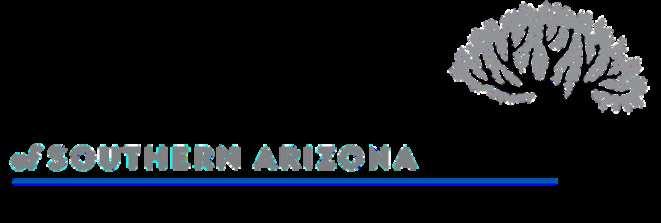
The first day, Shemini Atzeret, features Yizkor, a special memorial prayer for the
whose parents are still alive leave the sanctuary for the duration of this short service.
The text of the prayer asks G-d that the souls of our loved ones be “bound up in the bond of life with the souls of Abraham, Isaac and Jacob, Sarah, Rebecca, Rachel and Leah, and with the other righteous men and women who are in Gan Eden” in merit of the charity that we give in their honor. (The charity should be given after the holiday, of course).
As we enter the rainy season (in the holy land of Israel), we insert into the musaf prayer of Shemini Atzeret special prayers that the coming rainfall engenders blessing, life, and plenty.
Hakafot and dancing
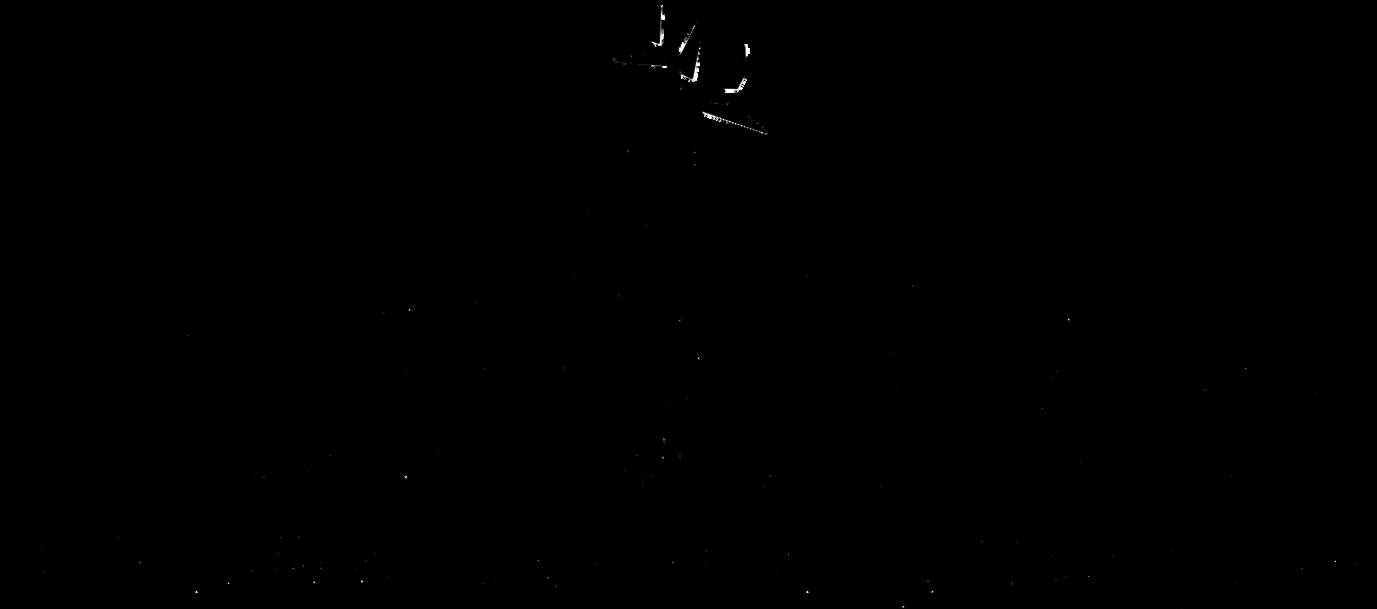
We conclude the Torah reading cycle on Simchat Torah day. Before doing so, we
lectern. These are called hakafot— ”encirclings.”
(So immense is this joy that we begin it earlier, on the previous evening—dancing the hakafot following the evening services on the eve of Simchat Torah. In fact, some have the custom to dance the hakafot on the night before that as well—on the eve of Shemini Atzeret.)
The holiday ends Sunday, October 8 at 6:36 PM.
An inspiring month of holidays has reached its conclusion. Now is the time for us to take all the spiritual treasures we have amassed in these few weeks and “go on our way” newly invigorated and spiritually recharged. We can be assured that in the coming year, we will have the strength and fortitude to unflinchingly confront all life’s challenges and bring meaning and holiness to every area and situation that divine
Four personalities (unless Me-lech be-mitz-vo-tav with time point me-lech this together—you’ve holding differing observance. set, almudic referring to is that live the HOLIDAYS 101
October 13 - Financial Wellness Tips with Molly Quale from JFCS
November 10 - Engaging in the Arts at Every Age,
Berger
Fridays each month at Handmaker,
starting with...
Lunch is on us each month at Join us for a delicious lunch, learn about a variety of topics related to aging, and take home a Shabbat dinner! There is no cost to attend, but reservations are required. For more information, to RSVP, or for info on assistance with transportation, contact Nanci Levy at nlevy@handmaker.org or 520-322-3632.
program was funded by a grant from the Jewish Community Foundation of Southern Arizona.
Friday,
Friday,
with Marcia
2nd
from 11:30am-1:45pm,
Shabbat Lunch & Learn
This
Welcome to town: Dr. Diane Ashton
to leave whenever I wanted, which I often did because lots of older women didn’t smell very good!
Jewish app on phone: Yiddish dictionary.
Go-to Yiddish or Hebrew word: Mensch (Yiddish for a person with integrity and honor) and Chutzpah (Yiddish, for audacity).
Historical Jewish figure:
Maimonides, to discuss the nature of the universe and the responsibilities of being human.
Define Chabad:
I have mixed feelings… They are Orthodox, but I certainly appreciate the outreach. My daughter lives in Hanoi, Vietnam, and receives matzah for Passover from Chabad. I’m also in touch with Chabad here in Vail, Arizona.
Define happiness: This is a silly question!
Hobbies:
Travel, travel, and more travel everywhere in the world. I am especially interested in developing nations. I just returned from a trip to Mongolia - what a fascinating country!

Comfort food:
Cheese blintzes, but I’ve never found any that are as good as my Bubbe’s, probably because of her secret ingredient - lots of love.
By Benjamin Weiss
Alittle about myself: I was born and raised in Los Angeles in one of that city’s many west-side Jewish neighborhoods. I worked as a child psychologist, specializing in children with disabilities, and pioneered inclusive education in California. As a university professor, I received a Fulbright fellowship at the University of Namibia and consulted with the Namibian government and helped establish policies for access to education for all children. I also created
programs for orphans and children affected and infected by HIV/AIDS.
Moving to Tucson: Retirement brought me to Tucson, and I live in a fantastic senior community - The Academy Village, which is dedicated to lifelong learning.
High Holidays: Growing up, my public high school was about 90% Jewish and closed on Yom Kippur because there weren’t enough
students in attendance to hold classes. On Pesach, everyone ate peanut butter and jelly sandwiches on matzoh in the cafeteria.
To my chagrin, my family was Orthodox, and I was not allowed to go to the Reform Congregation, where most of my friends went. Because they had a choir, my mother said it was a church in disguise!
For High Holidays this year, I’m going back to Los Angeles
to be with long-time friends and attend that Reform Congregation with the choir!
Favorite Mitzvah/holiday: For me, the guiding principle of life is Tikkun Olam. Every day is an opportunity for small acts of kindness.
Cherished Jewish memory: Walking to Shul with my Bubbe on Saturday mornings in Venice Beach, California, and sitting next to her in the women’s section. I was allowed
Kvetch:
I wish there were a real Jewish deli here in Tucson. I want the smells and sight of the deli case and especially the bakery case with loads of different rugelach and cookies.
Kvell / nachas:
I’ve definitely made a positive difference in the lives of some girls in Africa. The story is much too long to tell here, but I will gladly share it with anyone who provides me coffee and rugelach (chocolate chip, please)!
Something you’re looking forward to in the coming year:
Good health, more international travel, and of course world peace (or, as we used to say in California, whirled peas)!
| September 2023 | Keeping Jewish 8
Dr. Diane Ashton in front of the Genghis Khan Equestrian Statue in Ulaanbaatar, Mongolia
LOCAL
Shfig salad
By Feigie Ceitlin
My mother-in-law, Mrs. Adina Ceitlin, cooks in a way that can be described with a single noun: Improvisation. When she arrives at the kitchen, she does so after clocking in a full day as the principal of the Chaya Mushka Seminary - Ben Weider Educational Centre in Montreal, Canada, so she moves quickly and works with whatever is handy.
One salad she made stood out in my memory for its freshness and suitability for Rosh Hashana. It had a delightful combination of flavors and textures and included both figs and pomegranate, which we customarily eat at the beginning of the new Jewish year.
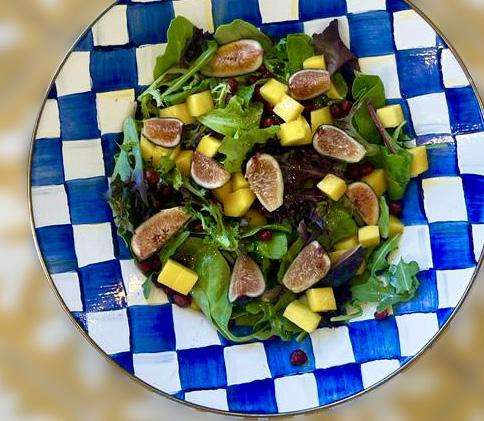
But when I later followed up with her the following year to find out the ingredients and directions, she had no recollection of it. She had simply made something from the foods she had gathered for the holiday and moved on to prepare the next dish.
Nevertheless, I was able to recreate it from memory. Because it originated from my mother-in-law - shviger in Yiddishand because it included figs, this recipe received its official name: the Shfig Salad. I hope you enjoy it as my family and guests do.
INGREDIENTS:
Salad:
1 lb Spring mix
1 mango
6 fresh figs
Seeds of 1 pomegranate
Dressing:
1/3 cup olive oil
2 tablespoons date syrup (silan)
2 tablespoons balsamic vinegar
Salt and pepper to taste
DIRECTIONS:
1. Wash and thoroughly dry the mixed greens (if they aren’t pre-washed).
2. Peel and pit the mango. Cut it into bitesized cubes. Ensure they are ripe and juicy for the best flavor.
3. Wash the fresh figs and remove the stems. Cut them into quarters or halves, depending on their size.
4. Extract Pomegranate Seeds. One way: Cut off the crown. Score the skin into sections and gently pull it apart. Hold each section upside down over a bowl and tap it with a wooden spoon to release the seeds.
5. In a small bowl, combine the olive oil, date syrup, balsamic vinegar, salt, and pepper. Whisk well.
6. In a large salad bowl, combine the mixed greens, mango cubes, fresh figs, and pomegranate seeds.
7. Drizzle the dressing over the salad. Start with a little and add more as per your taste preference. Toss gently to ensure all the ingredients are lightly coated.
8. Serve the salad immediately while it’s fresh and vibrant.
* Blessings
On the vegetables: Ha’Adamah Baruch atah A-donay, Elo-heinu Melech Ha’Olam borei pri ha-adamah.
Blessed are You, L-rd our G-d, King of the universe who creates the fruit of the earth.
On the fruits: Ha’etz Baruch atah A-donay, Elo-heinu Melech Ha’Olam borei pri ha-aitz.
Blessed are You, L-rd our G-d, King of the
universe, who creates the fruit of the tree.
On new fruit: Shehecheyanu (figs and pomegranate not eaten in 30 days)
Ba-ruch A-tah A-do-noi Eloiheinu Melech ha-o-lam she-he-chee-ya-nu v’ki-yi-ma-nu vi-hi-gi-ya-nu liz-man ha-zeh. Blessed are You, L-rd our G-d, King of the Universe, who has granted us life,
sustained us and enabled us to reach this occasion.
B’Tayavon!
— Rebbetzin Feigie Ceitlin is the program director of Chabad Tucson and head of school of Lamplighter Chabad Day School.


KOSHER
Photo: heninthekitchen.com
Photo: Jacqueline Soffer Photography
Casualties, victories and miracles
The 50th anniversary of the Yom Kippur War
 By Dovid Zaklikowski
By Dovid Zaklikowski
On September 25, 1973, Jordan’s King Hussein told Israeli Prime Minister Golda Meir that the Syrians were preparing to assault Israel. The visit by the King had been conducted in great secrecy just a few days before the Jewish New Year.
Meir did not believe the Syrians would attack without the help of Egypt, and King Hussein indicated that he believed Egypt would cooperate with the Syrians. The Egyptians were baffled and greatly relieved when Prime Minister Meir traveled to France for the Council of Europe as if nothing was brewing in the Middle East.
For two weeks after King Hussein’s secret visit, things escalated. The Syrians positioned their most
advanced surface-to-air missiles opposite the Golan Heights. The Soviets evacuated their citizens’ families in the middle of the night, most of whom were assisting the Egyptians with military exercises and training.
Refusing to engage, Israelis sent a message to the Egyptians and the Syrians through the Americans, saying that Israel had no intention of carrying out hostile action against them.
They continued to overlook the signs of war, even as the Egyptians told their soldiers to break their Ramadan fast and deployed more boats to the Egyptian side of the Suez Canal, and the Syrians transferred more ammunition to a central depot on the Golan front.
The holiest day of the year
On October 5, 1973, the Jews in the land of Israel were concluding their preparations for Yom Kippur, the holiest day on the Jewish calendar. Some soldiers were held back from returning home because of a “C alert,” the highest alert just short of declaring war. But relatively few reservists were called up for duty as the war neared.
By this time, Israeli intelligence was already fully aware of what was about to happen and predicted that the war would begin the next day at around 6 PM. Defense Minister Moshe Dayan refused to deploy the entire combat reserve, agreeing only to 50,000-60,000 men.
Early morning of Yom Kippur, word
of the definite impending war trickled from commanders to generals. By 6 AM, it was the opinion of most in the ranks of the army that there was an immediate need for a preemptive air strike.
In a meeting with Meir, General David Elazar argued for a preemptive air strike against the Syrian airfields and another, a few hours later, against their ground forces. To the general, the Syrian threat was much stronger than the Egyptian because it was closer to Israeli towns where there were civilians who needed protection.
The general turned to the prime minister, who was by then a grandmother herself, with a passionate plea: “A preemptive strike would save many lives!”
| September 2023 | Keeping Jewish
HISTORY
10
Photo: IDF Spokesperson’s Unit
The prime minister thought for a few moments and announced unequivocally that there would be no preemptive strike.
Later that afternoon, as millions prayed in synagogues, the Egyptian and Syrian armies surprised the Israelis – four hours earlier then predicted – with attacks on two fronts. Only then were all the reservists called up for deployment.

On the west bank of the Suez Canal, the Egyptians had 100,000 soldiers, 1,350 tanks, and 2,000 artillery pieces with heavy mortars. On the Israeli side there were 450 soldiers with 44 artillery pieces. A meager 220 Israeli tanks were spread out along 100 miles of the Sinai desert.

In the Golan Heights, there were eight Syrian tanks for every Israeli tank. In addition to the major discrepancy between the number of Israeli and Syrian forces, the Syrians were also well-prepared with secondary defense lines.
The next three days were horrible for the Israelis. Gone was the Israeli pride that all had shared after the triumph of the Six-Day War of 1967. Hundreds of soldiers were killed, and many were taken into captivity. The Arab nations rejoiced—the Israeli army was proven not to be invincible after all. The soldiers’ spirits were broken as they lost on many fronts.
Over the following twelve days, the Israelis made advances, but only with great sacrifices. By the time the war ended with a ceasefire 18 days after it started, Israel had lost 2,527 soldiers. The wounded numbered 7,251, and an additional 440 soldiers were in captivity.
Captain Motti Ashkenazi, who said he was notified of the immediate danger only 20 minutes before the war began, went on a hunger strike across the prime minister’s office in Jerusalem. His sign read, “Grandma, your defense minister failed you, and you are left with 3,000 dead grandchildren.” Both
Meir and Dayan soon resigned from their posts.
Comfort from Brooklyn
Immediately following the war, Chabad began to play an active and direct role. Chabad in Israel sprung into action, spearheading a mammoth effort to assist the widows and orphans of the Israeli soldiers killed in action.
From Brooklyn, the Rebbe wrote lengthy letters to many of the widows and the broken-spirited soldiers who were wounded in combat, lauding their great sacrifice for the nation of Israel. The Rebbe also penned warm letters to IDF generals and encouraged his followers to assist in boosting the morale amongst the troops.
Mourning the unnecessary loss of life, the Rebbe continuously urged Israeli politicians, in public addresses and in private audiences, to learn from the errors of the war.
On November 5, 1973, the Rebbe, writing to an educator regarding the importance of Jewish education in order to prevent assimilation, spoke of a basic “lesson” from what occurred during the summer before the war:
“The…lesson…becomes more obvious by analogy from medicine, which has two general aspects: cure and prevention. The first has to do with curing the sick; the second—with preventing sickness. At first glance, the accomplishment of the physician in curing the sick seems more impressive by its dramatic results than preventive medicine, where there could be some delusion that sickness would be somehow avoided. In truth, however, it is surely better to be certain of immunity to sickness. The latter is the way of G-d, as it is written: All the sicknesses etc. I will not visit upon you, for I, the G-d, heal you (Exodus 15:26).”
Despite human errors during the war, there was a miraculous victory, as the
Rebbe described in a letter after the war: “… there were ample miracles, and quite obvious ones, in the last war. The overall miracle, which has now been revealed, although not overly publicized, is the survival after the first few days of the war, when even Washington was seriously concerned whether the Israeli army could halt the tremendous onslaught of the first attack.”
Perhaps the greatest miracle was that the Egyptians stopped their invasion for no good military reason, only a few
miles east of the Canal. The obvious military strategy would have been to leave a few fortified positions in the rear and, with the huge army of 100,000 men armed to the teeth, to march forward in Sinai, where at that point in time, there was no organized defense of any military consequence. This cannot be explained by the natural order of things.
Keeping Jewish | September 2023 |
trickled the an air David and the than passionate save 11
--Dovid Zaklikowski is a freelance journalist living in Brooklyn, NY, and publisher of Hasidic Archives.
From left: Defense Minister Moshe Dayan, Prime Minister Golda Meir and General Rehavam Ze’evi in a helicopter during the Yom Kippur War in 1973 * Photo: IDF Spokesperson’s Unit
Photo: IDF Spokesperson’s Unit
Simcha - to be happy Simcha -
By Mendel Kalmenson and Zalman Abraham
If only we were more successful, more comfortable, or more respected, if only we had a perfect bill of health, less to worry about, and more to look forward to, then we would most certainly be happy. Or so we think. We tend to see happiness as a result of our circumstances, relegating it to the distant realm of “if only, then...,” leaving us with little we can do to influence its actualization.
Accordingly, the word “happiness” is derived from the Middle English word “hap,” as in happenstance or haphazard, implying random chance or luck. If you were lucky enough to be born into ideal circumstances, you have the conditions needed to be happy. If not, it seems there isn’t much you can do to impact your sense of satisfaction in life.
On the other hand, b’simcha, the Hebrew word for being in a state of happiness, shares the same letters as the word machashavah, thought.
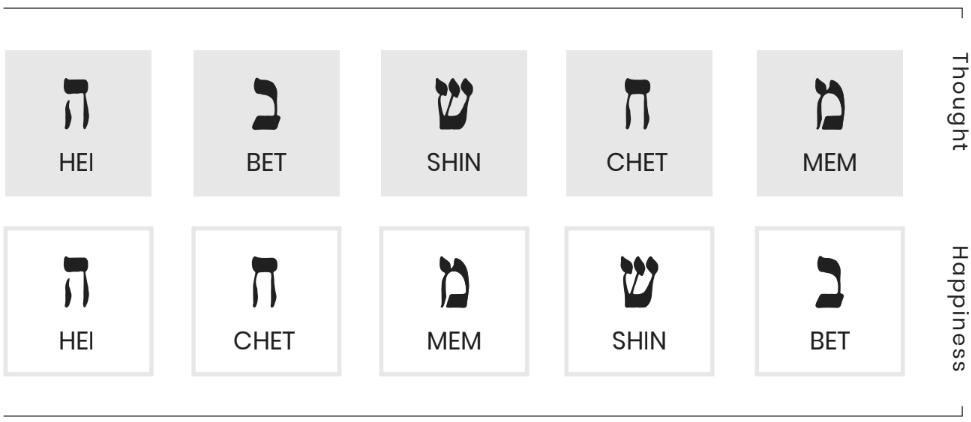
Judaism views happiness as a way of thinking, which is something that we can consciously direct, as opposed to a state of being that results from a specific set of circumstances outside our control.
From this perspective, happiness does not derive from our objective state of affairs but from our subjective state of mind. Put simply by Plato: “Reality is created by the mind. We can change our reality by changing our mind.”
Meaning, it isn’t luck or happenstance
that ensures our attainment of happiness; rather, it is the way we think about and process the circumstances we encounter along our path.
This simple idea has huge implications. It means that we can instantly achieve the happiness we seek by adjusting the focus of our thoughts.
This deceptively simple idea reveals that the greatest obstacle to our happiness is the mind’s tendency to fixate on the limitations of our circumstances and to regulate and take for granted the myriad good things we experience every day.

Each time we have a positive experience, we raise our expectations, sometimes exponentially, constantly needing more and more stimulus to achieve the same level of satisfaction.
In the words of our Sages: “He who has one hundred wants two hundred, and he who has two hundred wants four hundred.”
As a result, we never reach the satisfaction we seek, and happiness remains an endless pursuit, a never-ending hedonic treadmill, always just beyond our reach. From
this perspective, fulfillment becomes a frustrating illusion that never materializes.
Judaism’s solution to the “happiness problem” is to view happiness as a thought, making it an infinitely renewable resource, always at our disposal, rather than an existential lottery ticket.
All it requires is a minor investment of mental energy and enhanced awareness to stop thinking only about what’s missing in our lives and focus instead on what is present. In the words of the Mishnah: “Who is wealthy? He who is satisfied with his lot.”
Obviously, we cannot erase all pain from our lives, or from the lives of those that we love. There are things that are antithetical to feeling happy and such things will always be possible - we just cannot let them dominate our every moment.
True satisfaction in life comes not from having the things we want, but from wanting the things we have. To this end, there is a Jewish practice of reciting at least one hundred blessings each day, to seek out every opportunity to remember and verbally acknowledge our gratitude for
the basic amenities of life. For in life, the only things we truly have are the things that we appreciate.
The letters that make up the word simcha also spell shemacha, which means erasure, teaching us that a key component to happiness is our ability to live fully in this moment, erasing, at least temporarily, any painful thoughts about the past or anxious thoughts relating to the future. Now is where true happiness is found.
The Baal Shem Tov taught that: “You are where your thoughts are.” Meaning that one’s true location is where their mind is focused. The letters of the word samei’ach, happy, also spell sham moach—the location of one’s thoughts. When we do not recognize that we are in control of our own happiness, we live in a near-constant state of anxiety and discontent, and that becomes a defining feature of our lives.
But when we realize that we have the capacity to choose and change our thoughts at any moment, we come to appreciate that the key to happiness, for the most part, lies in our hands.
Food for thought: Happiness is a product of our subjective state of mind rather than our objective state of affairs.
—An excerpt from People of the Word, by Mendel Kalmenson and Zalman Abraham, exploring 50 key Hebrew words that have been mistranslated and misunderstood for centuries.
| September 2023 | Keeping Jewish
12
HEBREW
Photo by Shaurya Sagar on Unsplash
Judaism’s solution to the to “happiness problem”
Gershom Mendes Seixas The first native-born U.S. rabbi
By Seymour Brody
Gershom Mendes Seixas (pronounced “Sey-shus”) was the first native-born Rabbi in the United States. He was born in New York City on January 15, 1746, as one of seven children of Isaac and Rachel Seixas. His father, a tradesman, emigrated from Lisbon, Portugal, to New York in 1730.
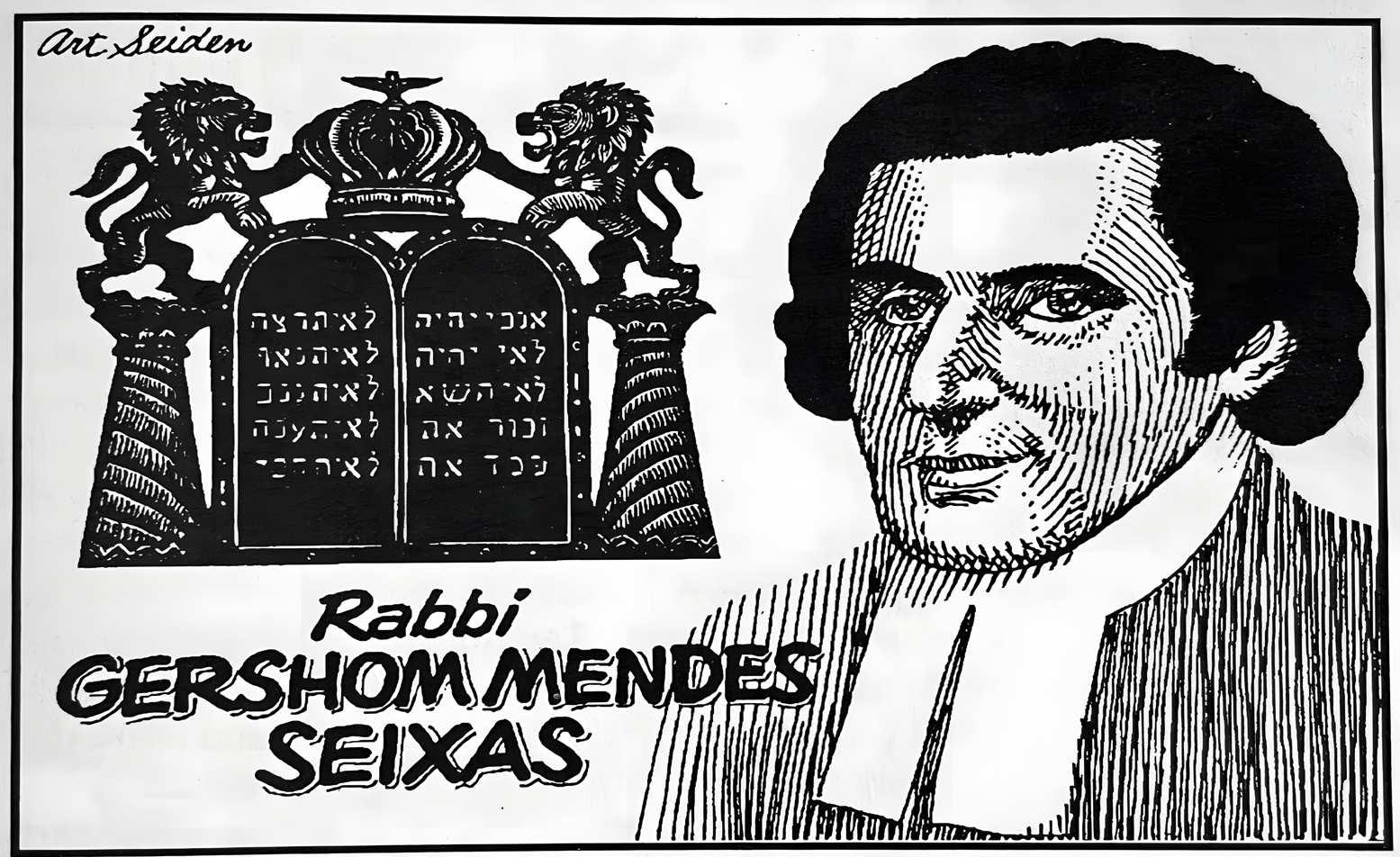
Gershom Seixas studied with Rabbi Joseph Jessurun Pinto of Congregation Shearith Israel, a Spanish and Portuguese synagogue in New York City. Seixas succeeded him as the rabbi in 1766. Seixas also served the religious needs of other Jews in the outlying areas of New York. He taught Hebrew, literature, and law to the community.
Seixas was the father of 15 children: four from his first wife, Elkaly Cohen, who died in 1785, and 11 from his second wife, Hannah Manuel, whom he married on November 1, 1789.
Notable among his children was his son, David Seixas, a crockery maker who was also a philanthropist and innovator. As a philanthropist, he established the Pennsylvania Institute for the Deaf and Dumb in Philadelphia, which is today the third-oldest school of its kind in the United States. As an innovator, he was among the first to discover ways of burning hard coal and helped introduce the country’s daguerreotypes photographic process.
Seixas and most of his congregation left New York City in 1776 when the British were approaching during the American Revolutionary War.
Seixas went to Stamford, Connecticut, while most of the congregation went to Philadelphia. Four years later, he joined the others in Philadelphia, where he helped found a new synagogue, Mikveh Israel. He was its rabbi for two years.
Seixas returned to New York to serve the Jewish community in 1784. He was a leader in helping to save the Jewish cemetery in Chatham Square from obliteration. He helped establish the Kalfe Sedeka Matten Besether in 1798 and the Hebra Hased Va’Amet in 1792. Both were charitable organizations.
He was the first rabbi in America to give his sermons in English. He advocated for Jewish participation in the government. When the council members of Philadelphia made eligibility for an assembly seat dependent on professing the divine origin of the New Testament, he and two other Jews openly fought against this unconstitutional religious test.
Seixas was in communication with Jews in Europe and other parts of America. He frequently consulted with the London synagogue’s Beth Din (Rabbinical Court) on religious matters. He helped raise funds to build synagogues in other American cities, and served as a trustee of Columbia College.
His brothers were also active in the life and development of the United States. Abraham Mendes was an officer in the Revolutionary Army who fought the British in the southern states. Benjamin was a founder of the New York Stock Exchange. Moses Mendes was one of the organizers and the first cashier of the Bank of Rhode Island and was president of the Newport congregation in 1790.
Seixas died on July 2, 1816, and was buried in New York City’s New Bowery cemetery of Shearith Israel Congregation.
- Originally published in Jewish Heroes & Heroines of America: 150 True Stories of American Jewish Heroism (Frederick Fell Publishers, Inc.)

Keeping Jewish | September 2023 |
13
Illustration by Art Seiden
PROFILE
Getting ahead on the new year the new year
By Mordechai Schmutter By Schmutter
Welcome back to “How Should I Know?” – the column that four out of five doctors recommend you stay away from.
Dear Mordechai, How do I prepare a fish head so it actually tastes good?
D.B.
Dear D., You can’t. We eat fish heads for Rosh Hashanah for symbolic purposes, primarily symbolizing how we can eat something that tastes bad at the start of the year. There’s a reason that fish heads aren’t a delicacy anywhere. Basically, we’re showing G-d that the only reason we’re eating fish heads is to pray that we keep our “head” straight this coming year and not be someone else’s tail.
In fact, my son went deep sea fishing with his camp recently, and he said that whatever the kids caught, the fishermen cut the heads off and threw them right back into the ocean to grow new bodieslike it’s a plant.
In my house, we usually have salmon heads. I’ve tried flavoring them as if they were salmon, but the flavor doesn’t seem to penetrate their thick heads.
One year, I tried eating the eye on a dare, thinking it might catch on with the family. But if it did catch on, it only accommodates up to two family members – four if you eat a fish called the anableps, which actually has four eyes but not the most appetizing name.

“Would you like some anableps?”
“Get away from me!”
Another idea is to just cook the head with the rest of the fish. Whole, with an apple in its mouth.
“Where’s the apple for dipping in honey?”
“What do you mean? It’s right here.”
Some people actually stuff the head with raw gefilte fish and cook it and then they eat out the gefilte, which I think is kind of like cheating.
“Look, kids! It was eating gefilte when it
died! And carrots!”
The only fish head dish that I was actually able to find is something called “fish head soup.” Just put in several smaller fish heads and dole them out instead of matzo balls!
For extra fun, don’t tell anyone beforehand that you’re doing this.
* Dear Mordechai,
What’s a good food to eat right before the fast?
P.F.
Dear P., Fish heads!
Actually, I find that it doesn’t matter what you eat; you’re still going to be hungry on the way to the Kol Nidrei service. There are customs that might theoretically help. Some people eat kreplach on the eve
of Yom Kippur, which works to give you noodles now, and after your body digests the noodles--surprise! There’s a meatball in there. It’s a time-release food. I think you’re supposed to swallow them whole. To answer this question, I looked up two things:
1. What to eat before a fast, and
2. Foods that suppress your appetite. In the first list, it said not to have coffee, chocolate, pickles, or spicy foods. The second list said you should have coffee, chocolate, pickles, and spicy foods. Clearly, no one really has any idea. The best strategy is to think back about which things make you lose your appetite in general. For example, I find that when I’m really stressed, I’m not hungry. So let’s bring that to Yom Kippur! What is there to be stressed about on Yom Kippur? You have to create something. At first I thought that right before the fast, I could get into a huge argument with my wife. Then I could walk out the door. Great idea, right? Unfortunately, this does not cause her to lose her appetite - she stress eats. This would not be a balanced approach. I have to find someone else to argue with before Yom Kippur -preferably someone who also loses their appetite when stressed. Call me.
Another thing that probably makes you lose your appetite is eating something that nauseates you, such as the previous week’s fish heads, which is exactly what I said to begin with. You don’t even have to eat them. Just keep them in a little container all day and sniff them periodically, like the cloves we smell for Havdalah after Shabbat. That should help keep your appetite at bay. You can pass it around the Shul for other people to smell, too! Don’t tell anyone beforehand that it’s fish heads.
Have a question for “How Should I Know?”
The first person to send one in along with a stamp will get – for free! – the rest of my fish head.
| September 2023 | Keeping Jewish
14 HUMOR
Photo by Mateusz Feliksik/Pexels
Take the Nations Quiz
By Menachem Posner
During the holiday of Sukkos, Jews pray for the nations of the world. Test yourself how well you know some of them.

1. Who enslaved the Israelites prior to the Exodus?
A. The Egyptians
B. The Western Canaanites
C. The Sinai Desert tribes
D. The Girgashites
2. On which nation did G-d declare an eternal war?
A. Amalek, the first to attack Israel on their way out of Egypt
B. Midian, who had hired Balaam
C. Philistines, who antagonized Israel for centuries
3. From which nation didAbraham purchase a burial plot for Sarah?
A. The Jebusites
B. The Amorites
C. The Hittites
D. The Semites
4. Which two nations were produced by Lot’s union with his daughters?
A. Gog and Magog
B. Amon and Moab
C. Motzi and Matzah
D. Kush and Sheba
5. Which nation did Noah curse with slavery?
A. Japheth
B. Canaan
C. Sodom
D. Babylon
6. From which nation did David conquer Jerusalem?
A. The Semites
B. The Jebusites
C. The Philistines
D. The Jerusalemite Kugelites
7. Which nation destroyed the First Holy Temple?
A. The Byzantines
B. The Babylonians
C.The Romans
D. The Greeks
8. Which nation “tricked” Joshua into a treaty?
A. The Gibeonites
B. The Canaanites
C. The Cellulitis
D. The Greeks
9. Which nation descended from Esau?
A. Bashan (led by the giant Og)
B. Canaan (who had prior rights to the Promised Land)
C. Edom (which means “red”)
D. Egypt (Mitzrayim in Hebrew)
10.Against whom did the Maccabees fight?
A. The Assyrians
B. The Romans
C. The Syrian Greeks
Sukkah napkin holder
By Mushky Yiftach
Are you looking for a fun and practical Sukkot craft project? Look no further! In this tutorial, we will show you step by step how to make a Sukkah Napkin Holder that is not only adorable but also serves as a reminder to make a blessing. This craft is perfect for families to do together during the holiday season. So grab your supplies and let’s get started!
Supplies:
Approximately 35 Popsicle sticks
Napkin holder
Green paper
2 pieces of paper 6 inches x 3 inches (any color)
Glue & tape
Optional: Pipe cleaners
Door template
Sukkah blessing template
Instructions:
1. Glue the popsicle sticks to the paper and let dry. Do this 2 times. Take the popsicle sticks and glue them onto the paper, making sure they are evenly spaced. Repeat this step two times to create two sets of “sukkah walls”. Let the glue dry completely before moving on to the next step.
2. Cut out leaves from the green paper. Using the green paper, cut out small leaf shapes that will be used to decorate the sukkah walls.
3. Glue on the leaves and sukkah decor to the popsicle sticks. Using the glue, attach the leaves and any other decorations you want to the popsicle sticks to create a festive Sukkah. You can also use pipe
cleaners to create a more 3D effect for your decorations.
4. Tape both “sukkah walls” to the napkin holder. Using tape, attach the two sets of sukkah walls to the napkin holder. Make sure they are positioned evenly and securely.
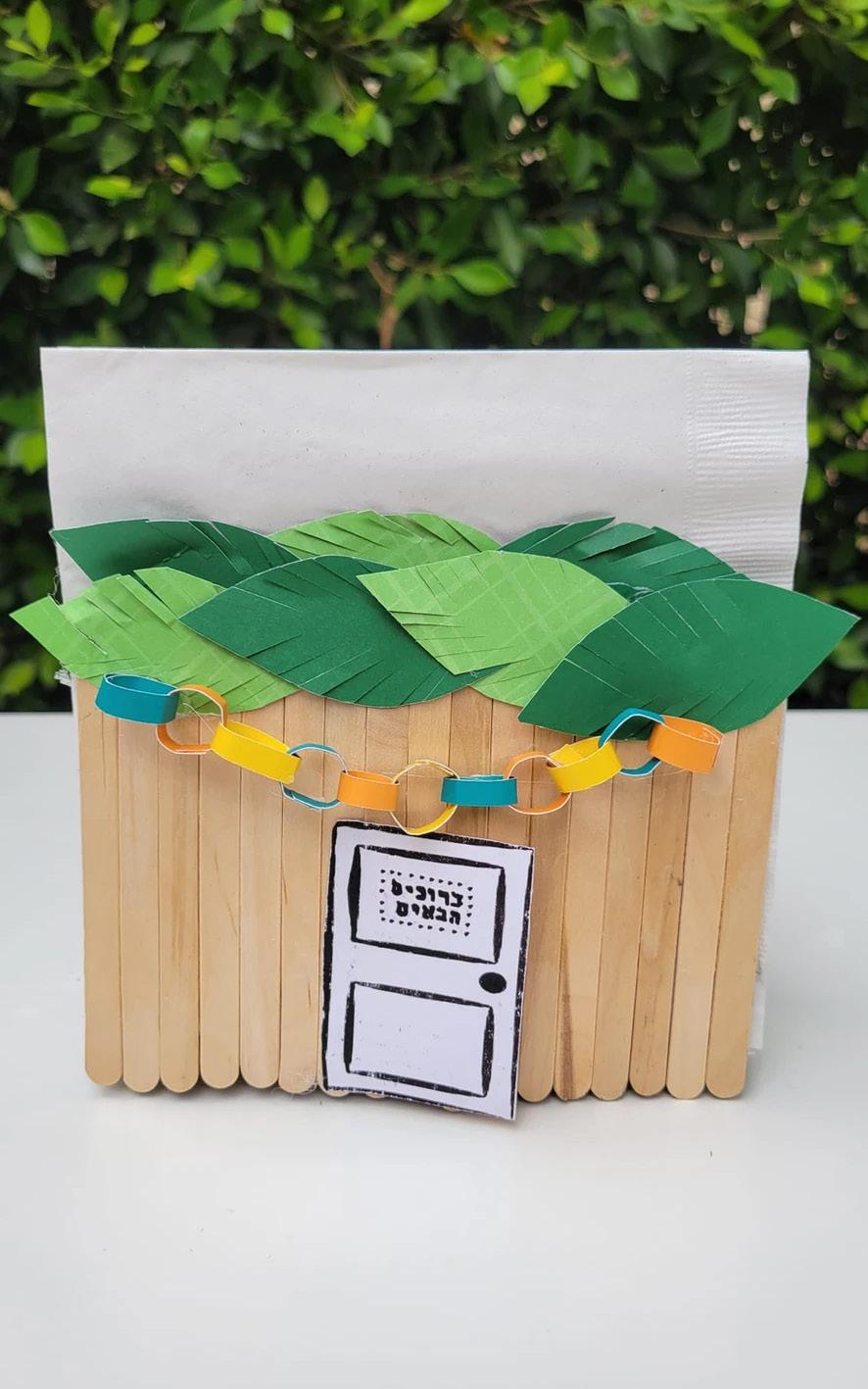
5. Enjoy using your adorable and practical napkin holder while saying a Leishev Basukah blessing on your delicious food! Now your Sukkah Napkin Holder is complete and ready to use! Place it on your Sukkah table and enjoy using it throughout the holiday season. Don’t forget to say the Leishev Basukah blessing before you eat your delicious food!
For more creative activities, visit: onarollcrafts.com
Keeping Jewish | September 2023 |
15 GAME
ANSWERS: 1-A, 2-A, 3-C, 4-B, 5-B, 6-B, 7-B, 8-A, 9-C, 10-C.
Photo by Porapak Apichodilok/Pexels
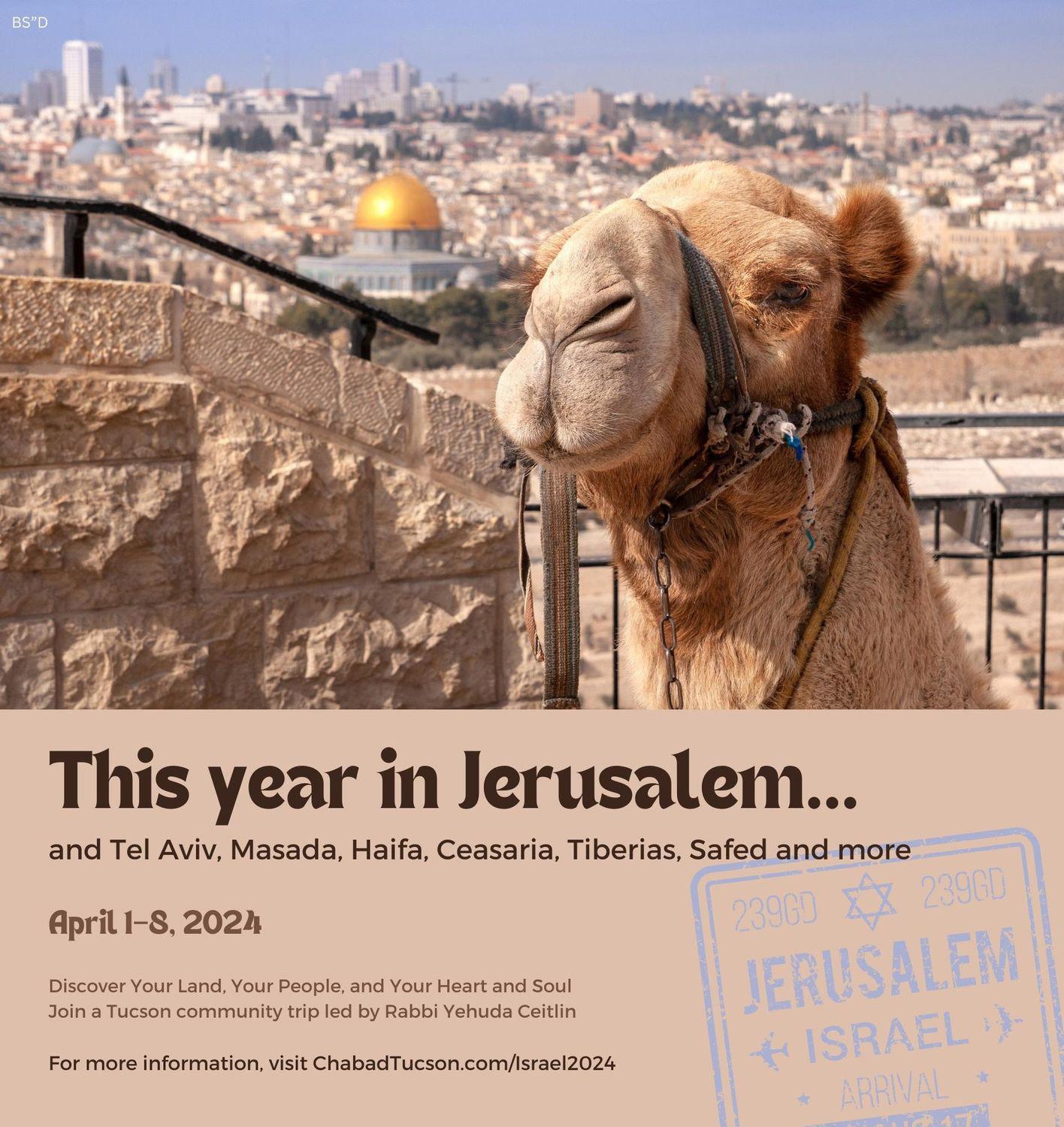























 By Dovid Zaklikowski
By Dovid Zaklikowski









